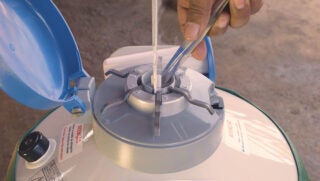Harvest is under way as autumn days shorten, and many producers in their combines may be pondering whether fall tillage is a good move this year. Most will decide that it is. In addition to the numerous benefits provided by fall tillage, the KINZE Mach Till™ product line can help take your efforts to the next level, offering a unique hybrid horizontal approach, distinct from conventional or vertical, which helps bury residue to accelerate decomposition and returns precious nutrients to the soil.
The right tool and technique always increase efficiency, and information fuels progress.
Timing is vital
The question of fall vs. spring tillage is as old as the practice, and a number of factors come into play: Soil compaction, type, field-rotation plans, and cover crops are just a few of these data points. Questions of soil conditions and management tend to rule the day though. Soil conditions to factor in include drainage and topsoil depth, slope, organic matter, and texture. Management questions include your overall approach to residue management, fertilizer program, and soil testing.
Given a normal harvest season without excess rain, fall soil moisture profiles are typically more suitable for tillage than spring ones, when moisture is typically at capacity or above. The post-thaw soil moistures found during most springs lead to soil compaction, smeared soil, and, in turn, large clods. Another risk to waiting until spring, as every farmer knows, is the notoriously unpredictable Mother Nature. A long, rainy March and April can delay the process until much later in the season, ultimately impacting your soil biology and your yields.
All the more reason why timing and tool selection like the Mach Till are critical.
The KINZE Mach Till series is a hybrid horizontal tillage system that sheds residue at speeds above eight miles per hour. This stands in contrast to alternatives such as vertical tillage approaches, which broadly include any type of machine that does not move the soil from side to side. This prevents the creation of a horizontal layer, and tools in this approach would include chisels, in-line rippers, and straight blade coulter machines. Vertical tillage tends to produce a surface level, or shallow cut.
The hybrid horizontal approach combines the benefits of conventional disks and vertical tillage with soil finishing products into one fast-moving tool. The tool cuts and throws soil to an angle, allowing the series to avoid smears and compaction layers. Meanwhile the OTICO furrow roller on back works to minimize compaction.
The KINZE Mach Till 261 is among the series’ machines that utilizes two rows of concave discs and the corrugated roller to fracture, lift, mix, break up, level, and firm the soil. The resulting seedbed mix contains about 60 percent of the residue mixed into the dirt with 40 percent remaining on top as mulch to protect it. This leaves the soil in optimal condition for improved structure, faster germination, and erosion control.
Because the frame has been designed to be heavy, there is no need to add extra weight. The weight of the tool itself is enough to tackle challenging soil and trash conditions without causing compaction. The result is a soil bed ready for spring planting. At speeds of as much as 12 miles per hour, the unit can clear 60 acres per hour, a significant factor in terms of time and cost efficiency.
And farmers know that the debate between tillage and no-till often includes financial benefits, making the more efficient speed, fuel, and time measures a potential game-changer.
Managing residue and ground quality
Yield differences between tillage strategies vary depending on many factors but generally favor tillage over no-till. Different crops generate different residue volumes, and overall productivity plays into this as well. A 130-bushel-per acre corn crop is estimated to generate about 7,300 pounds of above-ground residue; compare that with a 40-bush-per-acre soybean crop, which is expected to generate about 3,600 pounds. Different crops also generate a different chemical makeup in terms of residue, which in turn determines composition rate and physical properties and nutrient availability. A general rule of thumb is that the decomposition rate is the carbon-to-nitrogen ratio in the residue, with lower ratios speeding the decomposition. Alfalfa and soybean residues offer ratios of 20:1 as opposed to corn with 70:1 and thus offer faster decomposition speeds. Large amounts of residue returned to the soil heighten both the organic matter as well as water-holding capacity.
Research indicates that 2.25 tons per acre per year of residue are needed to maintain the soil’s organic matter content. Increasing it to 7.2 tons per acre per year increased organic matter to 4 percent, up from 3 percent, after 11 years.
This improved soil quality is furthered by conservation tillage practices that help to reduce erosion, which carries valuable residue downstream with rain and wind. The KINZE Mach Till series is in keeping with this trend toward conservation tilling by hitting more than 30 percent of the minimum of protective layering.
The fall tillage approach is also ideal for combination with a cover crop for the winter months. Seed to soil contact is needed for proper germination. In general, pre-plant tillage to prepare the seedbed, control weeds, and disrupt insect and disease life cycles improves cover crop establishment. Mechanical tillage both controls the cover crops and mitigates existing weeds, while incorporating them deeply into the soil.
Time to till
Whether working ground in the fall or spring, the KINZE Mach Till series and its novel hybrid horizontal approach is a system to strongly consider. With weather always a dice roll, many producers agree that getting the field dressed while the equipment is out and ready beats waiting until spring. Meanwhile, the opportunity to combine a cover crop with the improved residue mix in the ground over winter makes for an appealing decision.
Brian Boyce is an award-winning writer living on a farm in west-central Indiana.
This article was published on behalf of KINZE.



